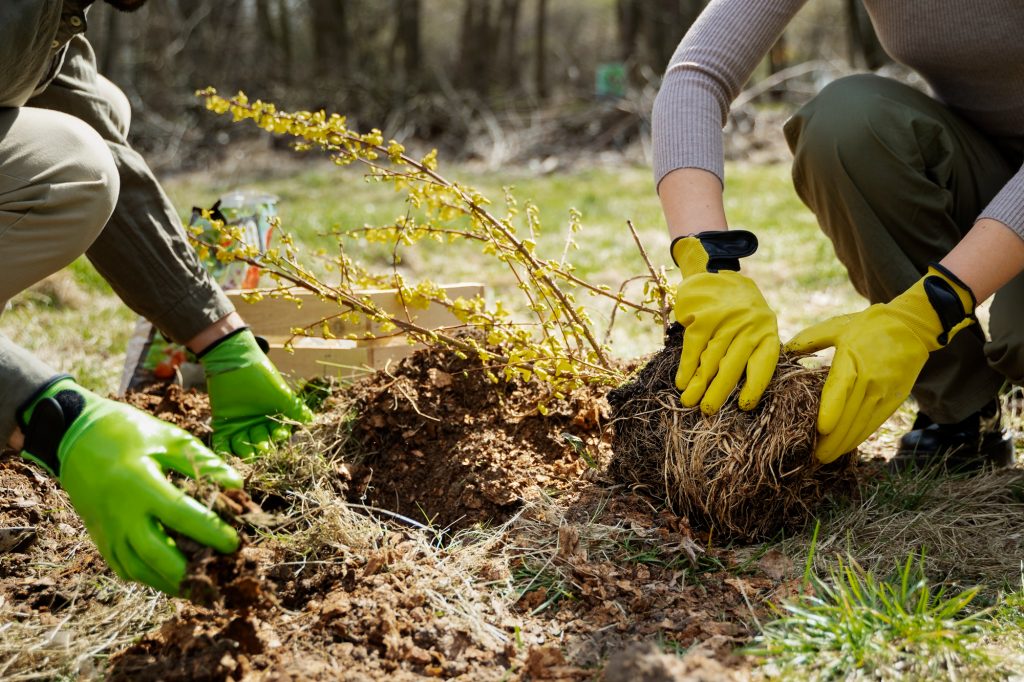Introduction
Creating a wildlife-friendly landscape not only adds beauty to your property but also provides a haven for a diverse range of species. Landscaping for wildlife is a rewarding and environmentally conscious approach that allows you to coexist with nature while supporting local ecosystems. In this blog post, we will explore the concept of landscaping for wildlife and provide practical tips on how to create a thriving habitat that attracts and sustains a variety of wildlife species.
- Understanding the Importance of Landscaping for Wildlife
Landscaping for wildlife plays a vital role in conservation efforts and the preservation of biodiversity. By designing and maintaining your outdoor space to mimic natural habitats, you can provide food, water, shelter, and breeding grounds for birds, butterflies, bees, and other wildlife species. It promotes a balanced ecosystem, improves pollination, and enhances overall environmental health.
- Planning Your Wildlife-Friendly Landscape
2.1. Research Local Wildlife: Start by familiarizing yourself with the native wildlife species in your region. Identify the types of animals and insects that are indigenous to your area and learn about their habitat preferences and dietary needs. This knowledge will guide your landscaping decisions.
2.2. Assess Your Property: Survey your property to determine its unique characteristics, including soil type, sunlight exposure, and existing vegetation. Take note of any natural features or potential areas for habitat creation, such as trees, shrubs, or open spaces.
2.3. Design with Diversity: Aim for a diverse landscape that incorporates a variety of native plants, trees, and shrubs. Choose species that provide a range of food sources, nectar, and shelter throughout the seasons. Incorporate different plant heights and structures to accommodate various wildlife needs.
2.4. Water Sources: Integrate water features into your landscape, such as birdbaths, shallow ponds, or small waterfalls. These provide essential drinking and bathing opportunities for wildlife, attracting a wide array of species to your yard.
- Creating Wildlife-Friendly Features
3.1. Native Plants: Native plants are best suited for local wildlife, as they have co-evolved with the local ecosystem. Incorporate a mix of flowering plants, grasses, and shrubs that provide nectar, seeds, berries, or foliage that cater to different wildlife species.
3.2. Wildlife Habitats: Include diverse habitats in your landscape, such as meadows, hedgerows, or woodpiles. These features provide nesting sites, shelter, and protection for wildlife.
3.3. Nesting Boxes and Feeders: Install birdhouses, bat boxes, and butterfly houses to encourage nesting and roosting. Place feeders strategically to attract birds and provide a supplementary food source during times of scarcity.
3.4. Pollinator Gardens: Designate an area specifically for pollinator-friendly plants to attract butterflies, bees, and other beneficial insects. Include a variety of flowering plants that bloom throughout the seasons to ensure a consistent nectar source.
- Sustainable Practices and Maintenance
4.1. Organic Gardening: Avoid using pesticides, herbicides, and synthetic fertilizers, as they can harm wildlife and disrupt the natural balance of your ecosystem. Opt for organic alternatives and natural pest control methods.
4.2. Water Conservation: Implement water-efficient practices such as drip irrigation, mulching, and rainwater harvesting. Minimize the use of chemical fertilizers near water sources to prevent pollution.
4.3. Seasonal Maintenance: Regularly maintain your wildlife-friendly landscape by removing invasive plants, pruning overgrown vegetation, and cleaning bird feeders and water sources. Periodically assess the health of plants and replace any diseased or dying ones.
Conclusion
Landscaping for wildlife is an opportunity to create a vibrant
and thriving habitat right in your own backyard. By understanding the importance of supporting local wildlife, planning a diverse landscape, and incorporating wildlife-friendly features, you can make a significant impact on the well-being of various species.
As you embark on your landscaping journey, remember to choose native plants, provide water sources, create habitats, and practice sustainable maintenance. By embracing these principles, you can attract a multitude of birds, butterflies, bees, and other wildlife, contributing to the overall health and balance of your local ecosystem.
Landscaping for wildlife is not only a way to connect with nature but also a chance to be an environmental steward. Start transforming your landscape into a haven for wildlife today, and enjoy the beauty and vitality that comes with living harmoniously with the natural world. – Landscaping for Wildlife

